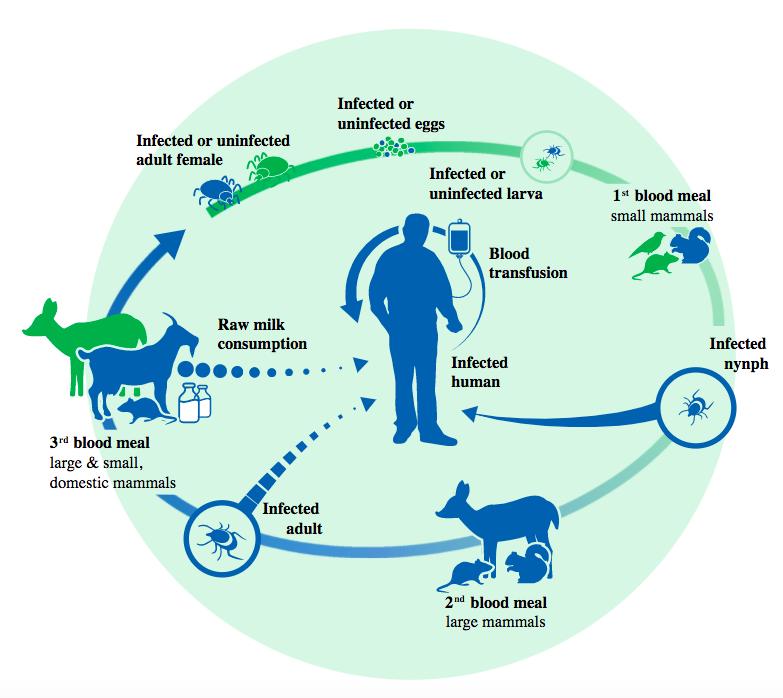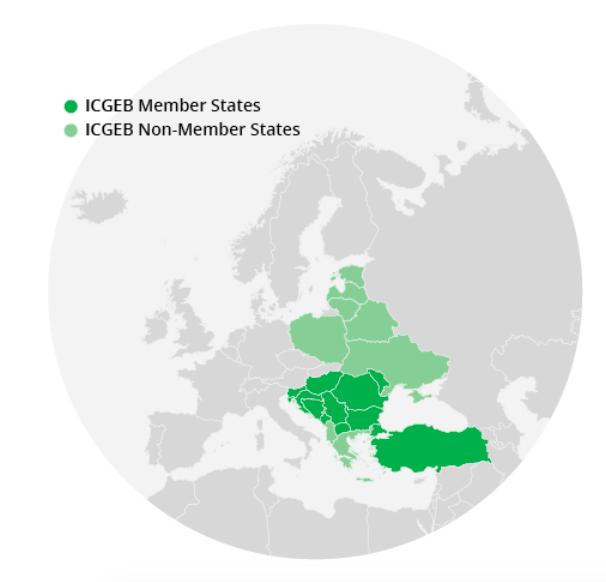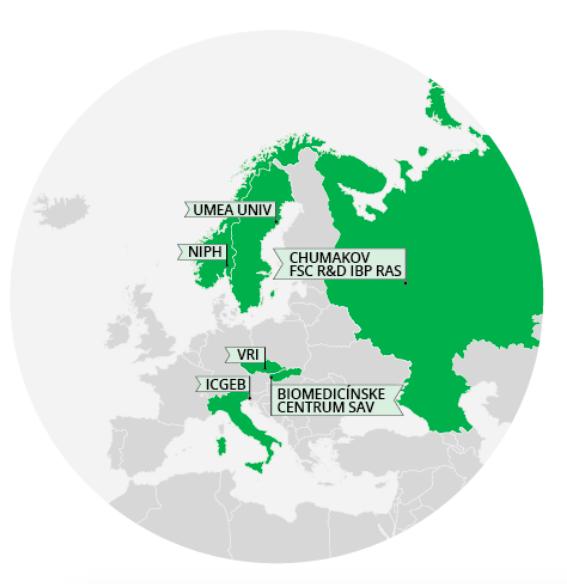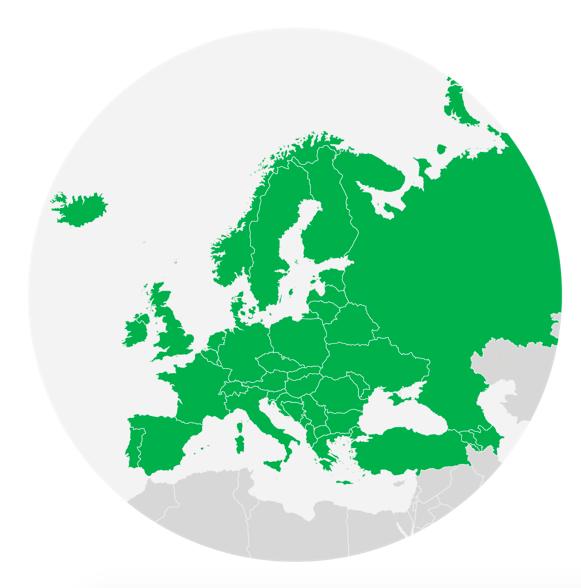
4 minute read
Project 0659
TBFVnet: surveillance and research on tickborne flaviviruses (TBFV)
The TBFVnet project is a network of laboratories that aim to study and survey tick-borne flaviviruses. TBFVnet stands for Tick-Borne Flavivirus network to express the mission of the project to bring together laboratories across Europe with long-standing expertise in tick-borne flaviviruses.

TBFVs include many human and animal pathogens causing severe diseases. These viruses find their way to farm animals, pets and humans through ticks. Even if ticks are widely spread, the viruses they carry have their own geographical distribution. Surveillance data are important to understand the distribution of a pathogen and to establish risk areas and implement countermeasures. Currently, monitoring capacity is unevenly distributed in different countries and TBFVnet aims to fill this gap. The project focuses on specific viruses belonging to the flavivirus family: Tick-Borne encephalitis virus, Powassan virus, Luping-ill virus and Omsk hemorrhagic fever virus. Besides surveillance, TBFVnet also aims to develop novel diagnostic tools and antivirals against tick-borne flavivirus infections. At present no antivirals or treatments for TBFV infections are available and a prophylactic vaccine is only available for Tick-Borne Encephalitis Virus.
In 2019 in Europe there were 3246 confirmed cases of Tick-borne encephalitis alone (with an incidence of seven per million of habitants) marking an increase over the past years. Tick-borne flaviviruses thus represent a common European challenge that can be best addressed through regional cross-border and transnational cooperation. This Project aims to build an international network of laboratories that collect and share expertise, tools and protocols to investigate the biology and the pathogenesis of TBFVs.
The lead partner is the Veterinary Research Institute of the Czech Republic, where the Daniel Ruzek lab works on the pathogenesis of Tick-Borne Encephalitis virus and the development and testing of vaccines and antivirals. The partner institutes are located in five European countries. In Russia, G. Karganova of the Chumakov Federal Scientific Center for Research and Development of Immune-and-Biological Products of Russian
Academy of Sciences focuses on the molecular basis of tick-borne flaviviruses. B. Klempa and his team from the Biomedical Research Center of the Slovak Academy of Science work on the ecology of new viruses. In Norway, at the Norwegian Institute of Public Health, Å. K. Andreassen and her team work on the neurological aspects of TBFV diseases. The laboratory of A. Överby is the Swedish partner from Umeå University that brings expertise to study the life cycle of TBFVs. A. Marcello and his team at the International Centre for Genetic Engineering and Biotechnology in Italy develop and study new diagnostic tools and antivirals.
Big challenges such tick-borne diseases can be faced through international and cross border collaboration. A crucial effort of the project is increasing its partnership. Sharing expertise and knowledge is of the greatest importance for the partners, and welcoming new partners will enrich the network enabling it to reach its objects.
Ticks
Tick-borne flaviviruses (TBFVs) are viruses that are transmitted by ticks and that cause severe disease in humans and animals. This project focuses on four TBFVs: Tick-borne encephalitis virus (TBEV), Powassan virus (POWV), Loupingill virus (LIV) and Omsk hemorragic fever virus (OHFV) that are a health problem in Central and Eastern Europe as well as in other countries. There are currently no antivirals for the treatment of TBFV infections. The only vaccine available is for TBEV.
Research
Research within TBFVnet is at the clinical and veterinary level aiming to (i) share expertise, protocols, and tools for the diagnosis and surveillance of TBFVs; (ii) investigate the molecular correlates of pathogenesis of TBFVs, and (iii) develop new antivirals.
Cooperation
Within this network, researchers work together across countries to study the biology and pathogenesis of TBFV disease. This will lead to develop new tools and procedures to increase prevention and treatment capacities. The integration of research and surveillance will create an international alliance to tackle TBFVs.


TBEV is considered the most relevant arbovirus in Central and Eastern Europe and in Russia, with about 13,000 estimated human cases annually causing severe diseases. Over the last decade there has been a 300% increase in the number of TBEV cases in Europe.
Infection of the vector begins when a tick takes a blood meal from an infected host: usually a wild mammal of the forest. TBEV in the blood of the host infects the tick.
Spread of Ticks
Tick-borne diseases are widely spread in Europe and include a large number of human and animal pathogens causing severe disease. TBEV, for example, is considered to be the most relevant arbovirus endemic in Central and Eastern Europe spreading from north to west.

Partners
Bringing specific and complementary expertise from surveillance to research in flavivirus biology, the partners are located in strategic geographic regions to monitor tickborne diseases across Europe: Czech Republic, Italy, Norway, Russia, Slovakia, and Sweden.



Countries
TBFVnet aims to raise awareness of tick-borne diseases. To this end, it seeks new partners and collaborators in neighbouring countries affected by tick-borne diseases and targeted by the Fund.
Communication Manager: Suzanne Kerbavcic

TBFVnet website: https://www.tbfvnet.eu/ Facebook: https://www.facebook.com/ICGEBOfficial/ Instagram: https://www.instagram.com/icgeb_official/?hl=en LinkedIn: https://www.linkedin.com/company/icgeb/ Twitter: https://twitter.com/ICGEB


Project 0662
Project concept and aim
This project addresses the common European challenges in the justice and home affairs area. Discussions about the problems related to the judiciary in Europe often mention citizens’ mistrust in the courts and the general misconception that courts and judges are not accountable to the society. One of the reasons of such negative attitude is the lack of transparency regarding the criteria and procedure of the selection, evaluation and/or promotion of judges.
The aim of this project is to create an innovative, scientifically based, transparent, unbiased and flexible multi-dimensional model of competencies required of a judge and innovative measurement methodology as established by the independent researchers in collaboration with the judiciary and civil society. This would contribute in improving citizens’ perception of the courts’ system and increasing their trust in the judiciary.
About project partners
The consortium is formed from partners from Lithuania, Czech Republic, Albania and Norway and is based on close cooperation between the academia and judiciary (3 universities and 2 Highest courts).
The Lead partner: Mykolas Romeris university, Lithuania.
The Expertise partner: The Oslo university, Norway. Beneficiary partners: The Supreme Court of Lithuania, The Supreme Court of Albania and the Metropolitan University Prague.
Main expected results
Creation of the multi-dimensional model of the competencies required of a judge and the corresponding innovative methodology and measurement tools for the procedures of judges’ selection, evaluation and promotion. The developed materials and scientific guidelines how to use the new methodology will be translated to the languages of the beneficiary countries and published in English at the project website for the free use for any other
European and non-European countries, which do not participate in the project as beneficiaries’. The creation of the universal system of competencies and methodology will enable the comparability between the countries and give a boost to the possible standardisation and portability of project results.


Innovation, Research, Education and Competitiveness







